Most piano teachers are probably pretty comfortable teaching the major scales. But when it comes time to teach the minor scales to piano students, things can get a bit murky.
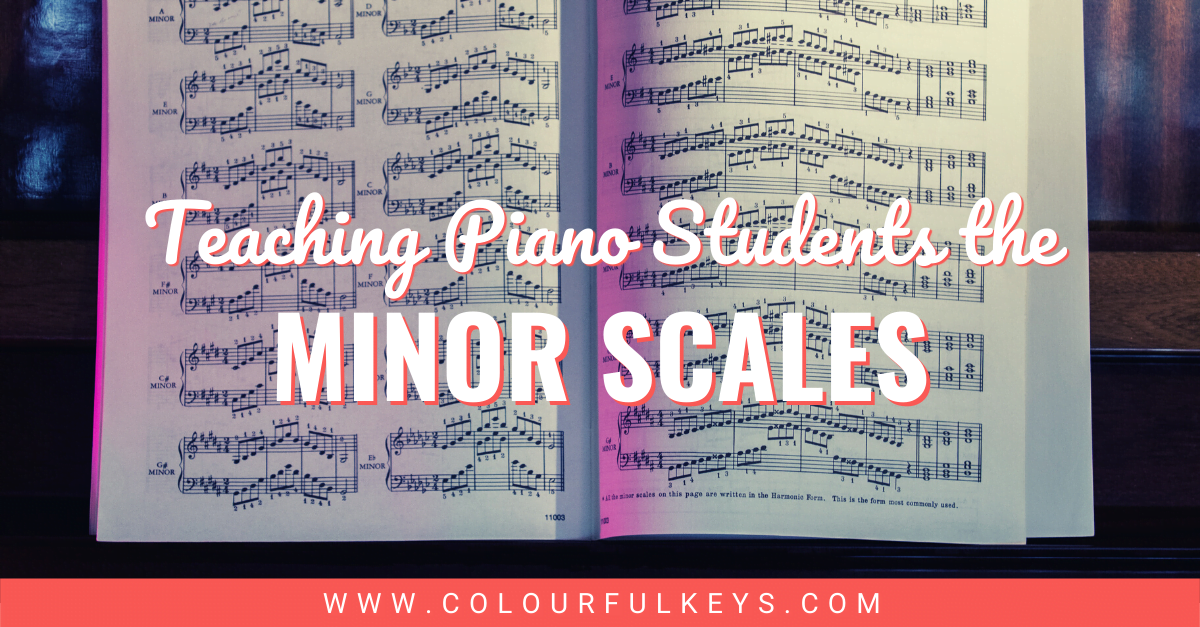
The content in this post was originally published in July and August 2017, and updated in November 2021.
Not sure where to start when teaching minor scales? I get it. There are many approaches to introducing and teaching the minor scales.
In this article, I’d like to put forward an argument for starting with the natural minor scales and progressing outward from there using fun and creative (and musical!) activities. In this way, students will really internalise the theory behind minor scales and feel comfortable encountering them in their music.
Natural Minor Scales
How were you taught the natural minor scales? Do you even remember? I do, and I think the way I was taught is a little odd…
I was taught natural minor scales as a segue to harmonic minor scales. We didn’t stop there; it was just how we got where we were going – and I bet that’s still the most common approach taken by teachers today.
This is how I was taught:
- Go up three semitones (half steps) to find the relative major scale
- Take this key signature as the basis for your minor scale, creating a natural minor
- Add the sharpened seventh to make the harmonic minor scale
I’m not saying this approach isn’t valid. But going straight from the major scales to harmonic or melodic can be confusing for students since they effectively have to learn 2 things at once (natural minor, then the changes to make it harmonic or melodic.)
There’s another way to look at it: Natural minor scales are simply major scales, but starting on the 6th or la.
Yes, I know this is obvious. But I don’t think many teachers introduce the natural minor scales this way, do they? At least not explicitly.
I prefer to spend some time on natural minor scales first so students will understand the theory behind all minor scales more thoroughly. Here are a few ways I use to make this connection explicit for my students.
Natural Minor Scales Switcheroo
My students get lots of practice switching between major and natural minor scales on the staff, on the keyboard and spelled out with letters. This reinforces the relationship between major and minor scales, making minor scales less scary for piano students.
Alphabet Blocks
Ask your student to form a major scale with alphabet blocks. Then move two blocks down to the bottom. (I shared how I made my blocks in this article.)
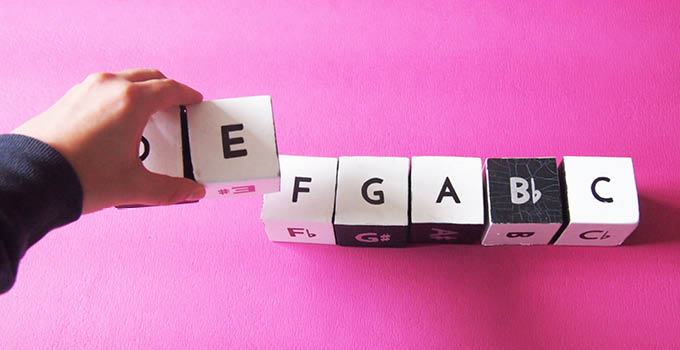
Always follow up by having your student play the new pattern on the piano, so they can experience the difference in sound.
Solfa
If your student already knows solfa and the curwen hand signs reasonably well, this can be a great way to experience the natural minor scales for the first time.
Use your hand signs to cue their singing of the major scale. (Sing along if necessary to boost their confidence.) Then cue the relative natural minor by starting and finishing on la.
Follow this with a discussion about the different sound and feeling, and how it’s created. Then apply the scales on the piano.
This is a truly tangible experience which will mean something to your student – not a dry theoretical explanation.
Erasers
Ask your student to place tokens (like these cute Iwako erasers) on the keys in the major scale pattern. Then have them move the top notes down to the bottom to form the relative natural minor scale.
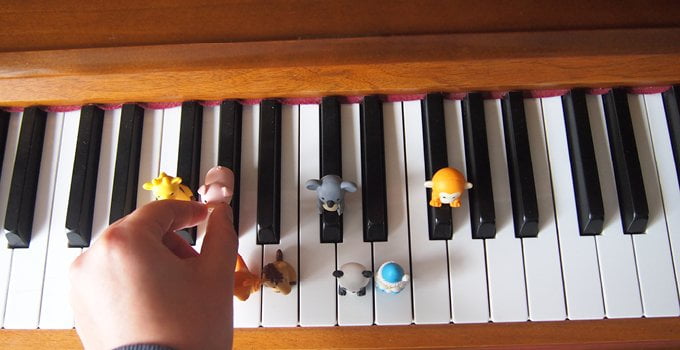
Ask your student to play both the major and the relative natural minor scale, so they can hear the relationship and the different sounds. (I suggest they play an octave higher so the critters don’t fall off. 😉)
Magnets on Staff
Similarly, you can do this with magnets if you have a magnetic whiteboard with a grand staff. I like to do this at a subsequent lesson to revise and refresh my student’s understanding of the natural minor scales.
Natural Minor Scales Flipped Learning Video
In this video, I teach students about natural minor scales using examples examples on the staff and on the piano.
Feel free to use the video in group lessons, assign as part of lab time or send the link to parents for their kids to watch.
Thinking Theory videos are designed to be clear and concise so students can watch them and then get on with some writing work for reinforcement, saving you time to do fun activities during your lesson time.
Need more ideas to shake up your approach to teaching scales? We’ve got what you need on our Music Theory hub page.
Harmonic Minor Scales
After my students have practised and reviewed the natural minors for at least a few weeks, that’s when we add the raised seventh and start working on harmonic minor scales. We do this on the staff, using tokens on the piano and of course playing the scales with some kind of improvised duet, backing tracks or drumming app.
Harmonic Minor Scales Flipped Learning Video
In this video, I teach students about harmonic minor scales using staff notation and piano examples.
Just like the video about natural minor scales, feel free to use this video in group lessons, assign as part of lab time or send the link to parents for their kids to watch, so you can save lesson time for fun activities.
These ‘Flipped Learning’ videos are designed to be clear and concise so students can watch them and then get on with some writing work for reinforcement, such as these harmonic minor worksheets.
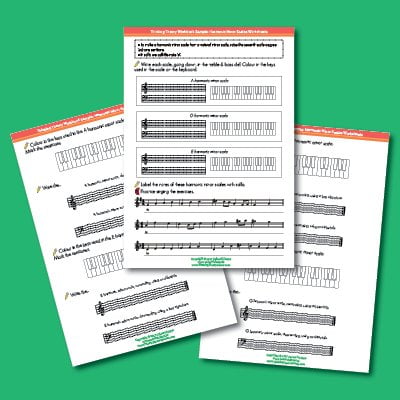
Subscribe to the newsletter and get the harmonic minor worksheets
Enter your details to subscribe to the newsletter for piano teachers with information, tips and offers.
I hate spam as much as you do! I will only send you emails related directly to piano teaching and you can unsubscribe at any time.
Vibrant Music Teaching members, you can access this resource inside the VMT library. Not a member yet? Find out more about becoming a member here.
Melodic Minor Scales
For melodic minor scales, I think improvisation is the route to success.
The clue is in the name, am I right? Melodic minor scales. What are scales for if not for creating melodies?
I know many teachers love the idea of including improv, but lack the confidence to do it. So, let me share some practical ways you can incorporate improvisation into your teaching of melodic minor scales.
Teacher Accompaniments
Did you cringe when you read that? Are you scared to get involved? Good. Sometimes it’s great to push our own boundaries a little. It helps us to learn. (And I promise this is easy peasy!)
Just start a simple chord progression in the key your student will be playing. This does not have to be fancy – a basic i-iv-V7-i would work great.
If even that sounds too freewheeling for you, take a duet part from a method book (the simpler the better) and transpose it to the correct key.
Once you have your accompaniment, ask your student to improvise with their melodic minor scale, turning around wherever they wish and making sure to adjust the accidentals as they go.
The more you do this, the more musical it will sound. Don’t worry if they just go straight up and down or stumble a lot in the beginning. It’s all part of the process.
MusiClock App
If you’re still really uncomfortable playing an accompaniment, if you’re teaching online or if you just need some variety, the MusiClock app is a great alternative.
Musiclock provides backing tracks in awesome pop, rock and jazz styles students just love, and can be a good stand-in option when when you don’t have a live accompaniment.
Melodic Minor Scales Flipped Learning Video
Just like with the natural minor scales and harmonic minor scales, there’s a flipped learning video about melodic minor scales, so you can free up lesson time for more fun activities.
How do you introduce minor scales to your piano students?
Do you have any favourite ways to approach the different types of minor scales? I’d love to hear about them in the comments below. 🙂
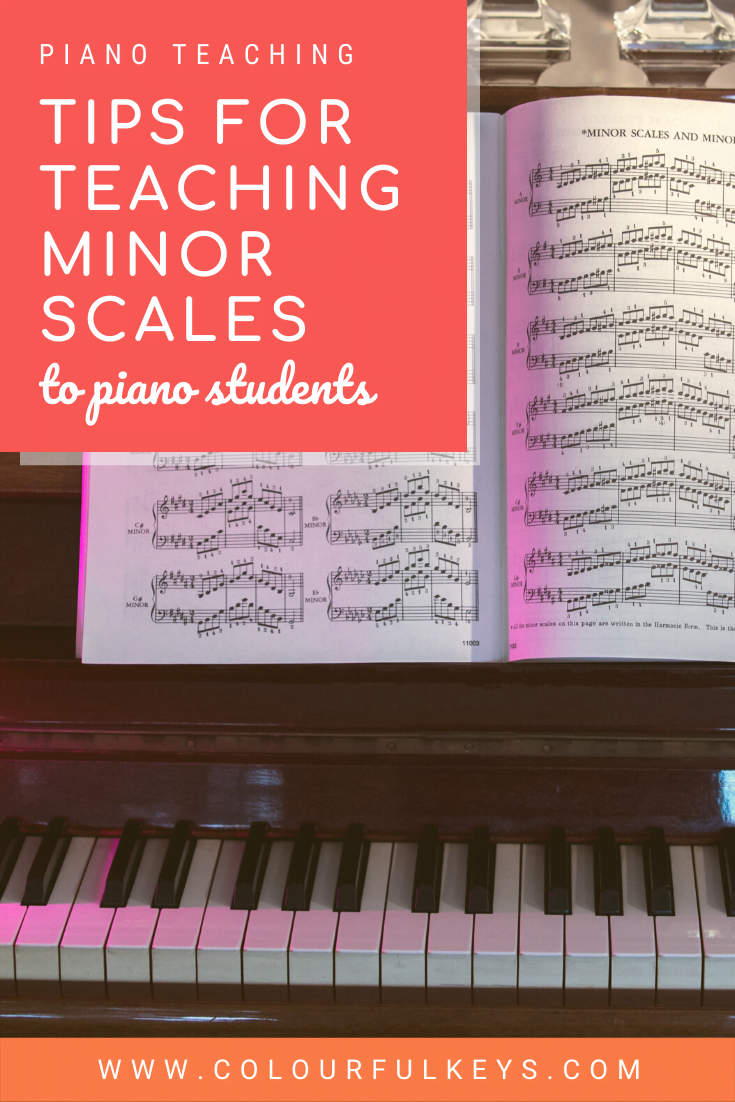
After teaching a major scale i always go straight to the relative minor. So they see how they are related. We talk the 3 changes within the minor. Natural, harmonic and melodic. We work on each of them. Then the next major scale and the their minor. I keep the group together. I also make them aware of the major and minor scale that is the basis of their pieces. Whether its harmonic or whatever. They are able to make that connection.